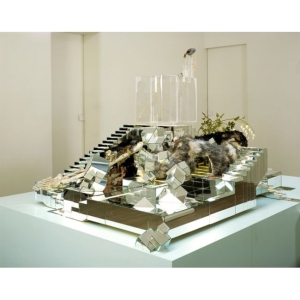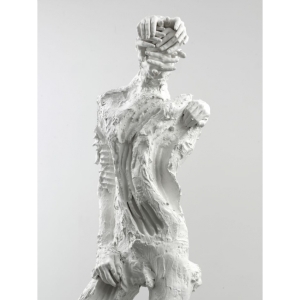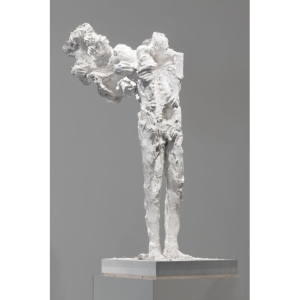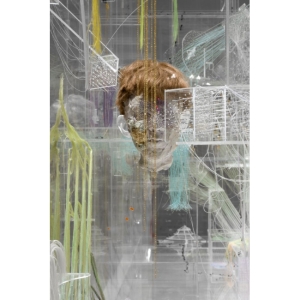French Impressionist painter Claude Monet (1840-1926), painting outdoors, ‘en plein air’, in his garden at Giverny.
French
Palazzo delle Esposizioni || Exhibition: Matisse’s garden || until 22.05.2016
While Matisse’s scissors ran over the paper, he fantasised about what a bird must feel like when it flies.
And as he cut out his shapes, he felt as though he were flying too.
The idea for this exhibition came from a book, a precious book which, in turn, was prompted by the work of an artist, Henri Matisse, interpreted with a light and subtle touch by Samantha Friedman, with collages by Italian illustrator Cristina Amodeo.
Matisse’s story takes on a feathery lightness, making you want to play the associations game and to recompose the great French painter’s simple shapes and colours. Page by page we watch as the creative process takes shape, discovering that a simple paper cut-out really can turn into anything we like, even a beautiful garden.
Matisse’s Garden comes to Italy from New York as the result of a joint venture launched by the MoMA-Museum of Modern Art and the Fatatrac publishing house, with Cristina Amodeo’s original illustrations and with reproductions of Matisse’s masterpieces at the Palazzo delle Esposizioni in Rome, which has always shown a special interest in international art publishing for children thanks to the collection on its Art Bookshelf.
The book, published to coincide with the exhibition on Henri Matisse: the Cut Outs, is the first in a new venture by the MoMA involving the publication of an album for every major exhibition associated with its collection and the dissemination of new titles in other countries in conjunction with various local publishing houses. The publishing house for Italy is Fatatrac – Edizioni del Borgo.
Henry Matisse (1869–1954), one of the 20th century’s greatest artists, was associated with the Fauves tendency, so named for its members’ approach to the use of colour and texture in their painting. Matisse’s work is renowned for the way in which he exploited colour to the full, eventually setting aside the paintbrush and producing intense collages with scissors alone.
Samantha Friedman is an assistant curator at the MoMA in New York. She has recently curated exhibitions on Henri Matisse: The Cut-Outs, Van Gogh, Dalí and Beyond: The World Reimagined and numerous others. In addition to the album on Matisse’s Garden, she has also written several essays and entries for MoMA catalogues.
Cristina Amodeo works as free-lance graphic designer and illustrator in Milan. She is the co-author of Matisse’s Garden and has also written Dogs and Chairs: Designer Pairs (Thames & Hudson). She uses full, harmonious colours to produce her collages. She is currently working on a paper doll book for the Victoria & Albert Museum in London.
Source: Palazzo delle Esposizioni
Thyssen-Bornemisza Museum || Exhibition: Raoul Dufy || until 17.05.2015
The Museo Thyssen-Bornemisza holds the first major retrospective on Raoul Dufy in Madrid since the one presented at the Casa de las Alhajas in 1989. The exhibition, which is benefiting from the collaboration of the Comunidad de Madrid, offers a comprehensive survey of the entire career of this French artist through 93 works loaned from private collections and museums, including the Musée d’Art Moderne de la Ville de Paris, the National Gallery of Art, Washington, the Art Institute of Chicago, the Tate, London, and an exceptional loan of 36 works from the Centre Pompidou in Paris. Although principally featuring oil paintings, the exhibition includes drawings and watercolours in addition to textiles and ceramics designed by Dufy during the course of his long and prolific career of more than half a century. The Museum offers a reassessment of his work that focuses not only on Dufy’s more hedonistic side as the painter of the pleasures of modern life, but also and primarily on his more introspective, reflexive and personal facet. Juan Ángel López-Manzanares, the exhibition’s curator and a curator at the Museo Thyssen- Bornemisza, has devised a chronologically ordered structure for the exhibition, which follows the development of Dufy’s painting through four sections: his early work (From Impressionism to Fauvism); the period when the influence of Cézanne led him towards Cubism (The Constructive Period); his output as a designer of textiles and ceramics (Decorative Designs); and finally, his mature phase (The Light of Colours).

Raoul Dufy, ‘Boardwalk of the Casino Marie-Christine at Sainte Adresse’ (1906). Oil on canvas ©Milwaukee Art Museum/Raoul Dufy

Raoul Dufy, ‘Still Life with Violin, Homage to Bach’ (1952). Oil on canvas ©Centre Pompidou, Musee national d’art moderne

Raoul Dufy,Peacock illustration (1910-11) from ‘The Bestiary’ by Guillaume Apollinaire. Woodcut on paper ©Centre Pompidou, Musee national d’art moderne

Raoul Dufy
Open Window, Nice, 1928
Oil on canvas.
65,1 x 53,7 cm
The Art Institute of Chicago, Joseph Winterbotham Collection
© Raoul Dufy / VEGAP / Madrid, 2015
Source: Thyssen-Bornemisza Museum
Louvre Museum || Exhibition: Rhodes ~ A Greek Island and Gateway to the East || until 09.02.2015
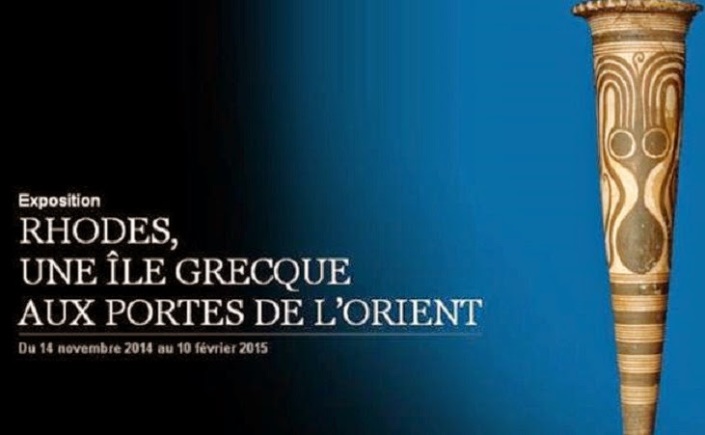
World famous for the now-gone Colossus—one of the Seven Wonders of the Ancient World—and the Knights of Saint John in the Middle Ages, Rhodes was a pivotal trading hub between the Aegean and the East since ancient times.
The artworks brought to this exhibition essentially from the museums of Rhodes and Copenhagen, as well as the Louvre and the British Museum, recall the exceptional richness of Rhodian archeology between the 14th and 6th centuries BC (from the Bronze Age to the Archaic period). It portrays the early and uninterrupted history of excavations by French, English, Danish, Italian and Greek archaeologists.
The exhibition highlights the cultural mix of Rhodes, a land of trade in the Eastern Mediterranean. It also provides an opportunity to rediscover the Orientalist nature of Rhodian art through some of its most spectacular productions, particularly its gold and silver works, unique to Greece, and its faience with ties to Egypt and the Levant.
Organized by:
Anne Coulié, Musée du Louvre, and Melina Filimonos-Tsopotou, 22nd Ephorate of Antiquities, Rhodes

Coupe de Siana a figures noires, The Trustees of the British Museum, Louvre Museum || Exhibition: Rhodes ~ A Greek Island and Gateway to the East ||until 09.02.2015

Collier de cornaline Copenhagen, Nation Museum of Denmark, Louvre Museum || Exhibition: Rhodes ~ A Greek Island and Gateway to the East ||until 09.02.2015
Source: Louvre Museum
MoMA | Museum of Modern Art || Exhibition: Henri Matisse ~ The Cut-Outs || until 10.02.2015

In the late 1940s, Henri Matisse turned almost exclusively to cut paper as his primary medium, and scissors as his chief implement, introducing a radically new operation that came to be called a cut-out. Matisse would cut painted sheets into forms of varying shapes and sizes—from the vegetal to the abstract—which he then arranged into lively compositions, striking for their play with color and contrast, their exploitation of decorative strategies, and their economy of means. Initially, these compositions were of modest size but, over time, their scale grew along with Matisse’s ambitions for them, expanding into mural or room-size works. A brilliant final chapter in Matisse’s long career, the cut-outs reflect both a renewed commitment to form and color and an inventiveness directed to the status of the work of art, whether as a unique object, environment, ornament, or a hybrid of all of these.
Henri Matisse: The Cut-Outs is a groundbreaking reassessment of this important body of work. The largest and most extensive presentation of the cut-outs ever mounted, the exhibition includes approximately 100 cut-outs—borrowed from public and private collections around the globe—along with a selection of related drawings, prints, illustrated books, stained glass, and textiles. The last time New York audiences were treated to an in-depth look at the cut-outs was in 1961.
This exhibition was sparked by an initiative to conserve The Museum of Modern Art’s monumental cut-out The Swimming Pool (1952), a favorite of visitors since its acquisition by MoMA in 1975. The Swimming Pool is the only cut-out composed for a specific room—the artist’s dining room in his apartment in Nice, France. The goals of the multiyear conservation effort have been to bring this magical environment back to its original color balance, height, and spatial configuration. Newly conserved, The Swimming Pool—off view for more than 20 years—returns to MoMA’s galleries as a centerpiece of the exhibition.
With research on two fronts—conservation and curatorial—this exhibition offers a reconsideration of the cut-outs by exploring a host of technical and conceptual issues: the artist’s methods and materials and the role and function of the works in his practice; their environmental aspects; their sculptural and temporal presence as their painted surfaces exhibited texture and materiality, curled off the walls, and shifted in position over time; and their double lives, first as contingent and mutable in the studio and, ultimately, as permanent, a transformation accomplished via mounting and framing. The exhibition also mines the tensions that lurk in all the cut-outs, between finish and process, fine art and decoration, drawing and color.
The exhibition is accompanied by a fully illustrated catalogue and a children’s book.

Henri Matisse (French, 1869–1954). Memory of Oceania. Nice-Cimiez, Hôtel Régina, summer 1952–early 1953. Gouache on paper, cut and pasted, and charcoal on paper mounted on canvas, 9′ 4″ x 9′ 4 7/8″ (284.4 x 286.4 cm). The Museum of Modern Art, New York. Mrs. Simon Guggenheim Fund. © 2014 Succession H. Matisse, Paris/Artists Rights Society (ARS), New York
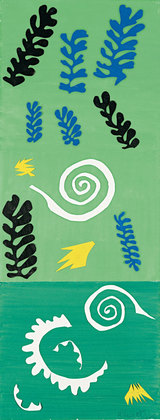
Henri Matisse (French, 1869–1954). Composition Green Background (Composition fond vert). 1947. Gouache on paper, cut and pasted, and pencil, 41 x 15 7/8” (104.1 x 40.3 cm). The Menil Collection, Houston. Photograph: Hickey-Robertson, Houston. © 2014 Succession H. Matisse, Paris/Artists Rights Society (ARS), New York

Henri Matisse (French, 1869–1954). Nuit de Noël. 1952. Maquette for stained-glass window. Gouache on paper, cut and pasted, mounted on board, 10’ 7″ x 53 1/2″ (322.8 x 135.9 cm). The Museum of Modern Art, New York. Gift of Time Inc. © 2014 Succession H. Matisse/Artists Rights Society (ARS), New York
Source: MoMA | Museum of Modern Art
#Onthisday Henri de Toulouse-Lautrec was born (24/11)
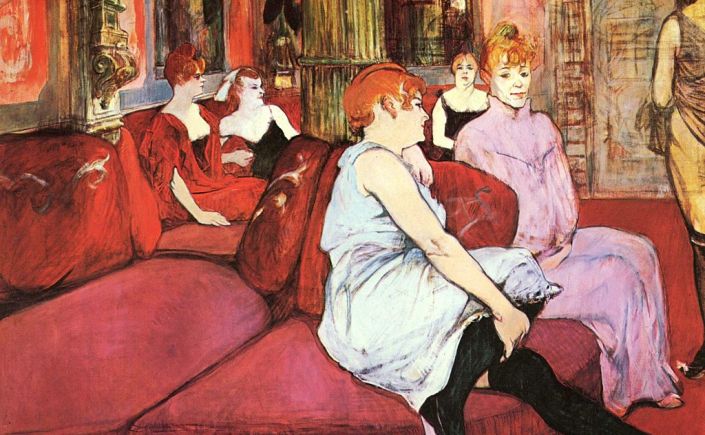
Henri Marie Raymond de Toulouse-Lautrec-Monfa or simply Henri de Toulouse-Lautrec (24 November 1864 – 9 September 1901) was a French painter, printmaker, draughtsman and illustrator whose immersion in the colourful and theatrical life of Paris in the late 1800s yielded a collection of exciting, elegant and provocative images of the modern and sometimes decadent life of those times. Toulouse-Lautrec – along with Cézanne, Van Gogh and Gauguin – is among the most well-known painters of the Post-Impressionist period. In a 2005 auction at Christie’s auction house, a new record was set when La blanchisseuse, an early painting of a young laundress, sold for US$22.4 million.
Throughout his career, which spanned less than 20 years, Toulouse-Lautrec created 737 canvases, 275 watercolours, 363 prints and posters, 5,084 drawings, some ceramic and stained glass work, and an unknown number of lost works. His debt to the Impressionists, in particular the more figurative painters Manet and Degas, is apparent. His style was influenced by the classical Japanese woodprints which became popular in art circles in Paris. In his works can be seen parallels to Manet’s detached barmaid at A Bar at the Folies-Bergère and the behind-the-scenes ballet dancers of Degas.
He excelled at depicting people in their working environments, with the colour and movement of the gaudy night-life present but the glamour stripped away, and was masterful when painting crowd scenes in which the figures are highly individualized. At the time that they were painted, the individual figures in his larger paintings could be identified by silhouette alone, and the names of many of these characters have been recorded. His treatment of his subject matter, whether as portraits, scenes of Parisian night-life, or intimate studies, has been described as both sympathetic and dispassionate.
Toulouse-Lautrec’s skilled depiction of people relied on his painterly style which is highly linear and gives great emphasis to contour. He often applied the paint in long, thin brushstrokes which would often leave much of the board on which they are painted showing through. Many of his works may best be described as drawings in coloured paint.

Henri de Toulouse-Lautrec, French – At the Moulin Rouge- The Dance – Google Art Project
Henri de Toulouse-Lautrec, French, 1864 – 1901 (1864 – 1901)
Source: Wikipedia
Palazzo Reale Milano || Exhibition: Marc Chagall – Una Retrospettiva 1908-1985 || until 18.01.2015

The Palazzo Reale in Milan presents the largest exhibition ever dedicated to Marc Chagall in Italy. Over 220 works, mostly paintings, guide visitors from his first painting Le Petit Salon (1908) to the last monumental works of the 1980s. It includes works from the collection of the heirs and masterpieces from major museums around the world, some of which have never been displayed before.
The theme of the exhibition is built around a new interpretation of the language of Chagall, whose poetic vein has been building over the course of the twentieth century through a mixture of major Western European traditions: from the original Jewish culture to that of the French avant-garde.
The exhibition is divided into sections: the first works made in Russia, the first stay in France and the subsequent return to Russia in 1921, the second period of his exile, first in France and then in the 1940s in America.

Marc Chagall Il compleanno 1915, olio su cartone The Museum of Modern Art, New York. Acquired through the Lillie P. Bliss Bequest, 1949 © 2014. Digital image, The Museum of Modern Art, New York/Scala, Firenze © Chagall ®, by SIAE 2014

Marc Chagall L’ebreo in rosso 1915, olio su cartone San Pietroburgo, Museo di Stato Russo © Chagall ®, by SIAE 2014
Musée d’Art moderne de la Ville de Paris || Exhibition: David Altmejd ~ Flux || until 01.02.2015
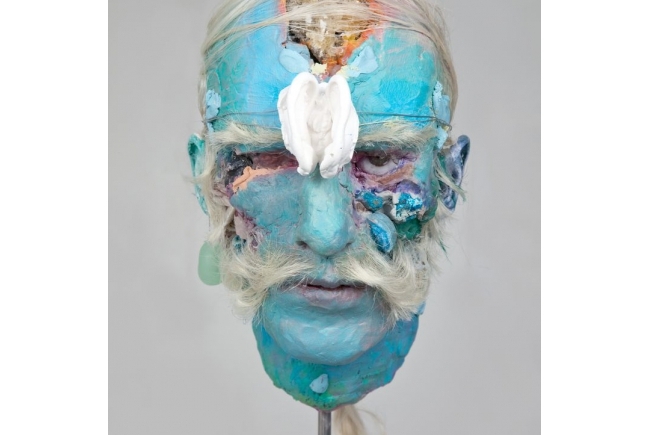
At ARC the Musée d’Art moderne de la Ville de Paris is presenting Flux, the first French retrospective of the work of David Altmejd. The exhibition includes unshown and older pieces, together with his most recent and certainly most ambitious monumental sculpture, The Flux and The Puddle (2014).
The exhibition takes the form of a work in its own right, with creatures sometimes combining the anthropomorphic and the animal: half-vegetal, half-mineral hybrids that make play with the architecture of the museum as they spin out their arachnoid labyrinths. David Altmejd’s approach to sculpture is characterised by its wide variety of materials and a longstanding interest in the natural sciences and architecture.
Altmejd works in direct contact with psychic flux. In his “definitive dreamer’s” world action and consciousness merge: he dominates the grotesque and the abject, combines aesthetics and ‘glamour’ and uses his sculptures to explore the worlds of dream and nightmare in a mingled ambience of fascination and terror.
The exhibition reveals a group of deliberately contradictory artistic accomplishments – conceptual and processual, virtuoso and readymade – while the flow of light from countless natural and artificial sources is split by the mirrors, shattered or intact according to the sculptor’s whim, that it encounters.
Close to the cinema worlds of David Cronenberg and David Lynch, and marked like all artists of his generation by the works of Matthew Barney, Altmejd combines mystical and alchemical elements with an aesthetic torn between structure and dispersion. A theatre of shapes and organs in gestation, and of crystals in formation, his work functions by strata, patiently assembling timeless sediments in a sudden, exhilarating, dreamlike explosion.
DAVID ALTMEJD
Born in Montreal in 1974, David Altmejd lives and works in New York. After studying visual arts at the University of Quebec in Montreal, where he majored in drawing and painting, he graduated as a sculptor in 1998. Fascinated by biology and the cinema of the fantastic, he moved to New York and in 2001 took out a fine arts degree at Columbia University. In 2007 he represented Canada at the 52nd Venice Biennale with his installation The Index and showed at the Istanbul and Whitney Biennials in 2003 and 2004 respectively.
TOURING
The exhibition will then travel to MUDAM in Luxembourg (7 March – 31 May 2015) and MACM in Montreal (18 June – 13 September 2015).
A generously illustrated artist’s book of 96 pages will be published by Paris Musées to mark the exhibition. It will contain an essay by Louise Déry and a conversation between David Altmejd, François Michaud and Robert Vifian.
With the generous backing of:























